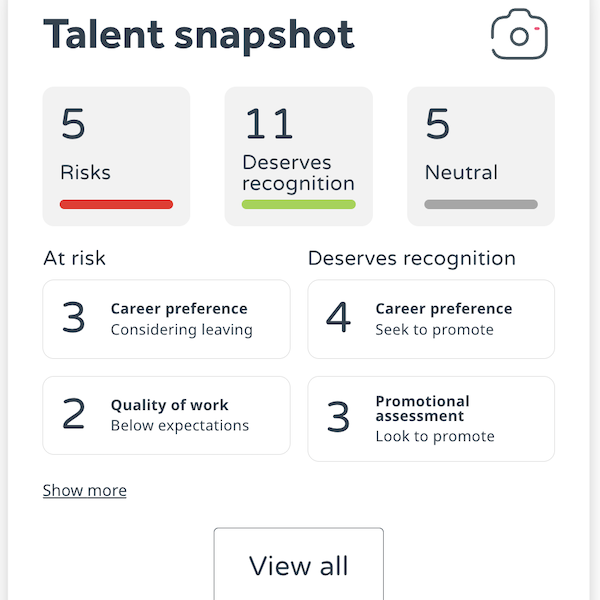A business is only as good as its people, and if there is no one following employee engagement best practices, the result is chaos and inefficiency. It is vital that people understand the vision and values of a business and act in a way that fits in with the ethos of the organisation.
A clearly defined set of guidelines is essential to ensure everyone is travelling in the same direction.
It makes business sense for any organisation to outline best practices, especially as it grows in size.
A carefully compiled manual of best practices builds an easy-to-navigate roadmap for a company and provides consistent instructions on how to deal with any issues that might arise. It may take time to compile, but it is a prudent investment that will mitigate uncertainty and ensure any problems that do arise are nipped in the bud.
You could say that the best practice is to create a set of best practices!
And this includes considering the needs and motivations of your team. As well as focusing on the efficiencies and processes of the organisation, it is essential to incorporate employee engagement best practices. Without considering employee engagement, best practices are little more than commands from the management.
What are employee engagement best practices?
The Chartered Management Institute (CMI) states that there are ten elements to employment engagement best practices. It is worth delving deeper and adding some context to this useful list. Let’s take a closer look.
 Get to know your team
Get to know your team
It may be an obvious statement, but people matter. We don’t employ robots – we employ humans, each with their own personality, needs, desires and expectations. Many people spend more time with their work colleagues than their family or friends. The least a manager or leader can do is take an interest in their team. Getting to know your team members is at the very heart of employee engagement.
Set clear expectations
Everyone wants to know what is expected of them. Without clearly defined expectations, uncertainty kicks in. Employees start to worry if they are doing the job properly and this can develop into anxiety about job security. This concern can be multiplied when working remotely, which leads us on to the next topic…
Keep team members in the loop
Communication is vital for team morale and the health of a company. Keeping team members up to date with news is always important, but good internal communications is about more than sharing information. Ensuring communication lines are robust allows managers to encourage, share ideas, connect with the team and build morale. Poor communication is a barrier to employee engagement.
Build relationships of trust
Employees in organisations where mutual trust is encouraged are more productive, have more energy at work, collaborate better with their colleagues, and stay with their employers longer than people working at low-trust companies. So what employee engagement best practices help you build trust?
Founding director of the Center for Neuroeconomics Studies at Claremont University, Paul J. Zak, argues that leaders in high-trust workplaces ask for help from colleagues instead of just telling them to do things. High-trust companies hold people accountable but without micromanaging them. They treat people like responsible adults.
Encourage open discussion and debate
A key employee engagement best practices is listening. Being a manager does not mean you know better than everyone else. Your team have gained in-depth knowledge in their area of specialism – why waste this valuable source of information? A good leader listens!
Seek out your team’s views and respond quickly to their ideas and questions. They will feel valued and, who knows, you might learn something!
 Empower your team
Empower your team
At WeThrive, we are here to help you “empower and engage your people”. Empowering people is at the heart of what we do! It comes back to the issue of trust. Empowering employees means trusting them to take action and make decisions (assuming they are in line with company policies).
It can mean letting go a little bit to avoid micro-management, and this isn’t an easy process for all managers. But allowing a sense of autonomy can trigger a boost in the self-esteem of an employee and unleash positive productivity results.
Give feedback
Another best practice of employee engagement is honest communication and feedback. If someone is not doing a task in the way you want them to, the only way they will ever know is if you tell them. It doesn’t mean you have to criticise or insult their work, but simple coaching will point them in the right direction. And never forget to give praise for a job well done.
A business should strive for a culture of continuous feedback. To achieve this, employees need a way to express their opinions, without fear of recrimination. WeThrive can help you set up processes which encourage feedback and help employees feel confident to share their work experiences with you.
Take the aspirations of team members seriously
What do your people want from their job? Where do they see their career going? It is important to know what the aspirations of your team members are. Everyone is different. Some people are ambitious and want to be challenged, others prefer to stay in their comfort zone. Regular employee surveys can help you understand the motivations and aims of your team. If you don’t understand the desires and needs of your team members, you may soon find resignation letters on your desk.
Deal promptly with performance issues
It’s very important when dealing with an underperforming employee to understand why there has been a drop off in productivity. There could be external factors at play, such as problems in their personal life. In such a case, they will need to feel safe to discuss these issues, and confidentiality is paramount.
It is just as likely that they feel unmotivated due to their work situation. Have you discussed creating individual performance targets, and have they bought into the targets? Again, this is an area and best practice where employee engagement surveys can tell you so much. A survey can identify frustrations at work and identify training needs.
Whatever has caused a drop in performance, it is important to monitor the situation. It could be a temporary blip, but if it continues, it is in the interest of the employee and the business to address it. If an employee has personal problems, for example, due to childcare issues, it may be that you could temporarily change start and finish times or reduce working hours.
Tackle conflicts at an early stage
Conflict within any work environment can cause stress. Left unchecked, it can cause extreme anxiety, poor performance and absenteeism. A positive work culture can quickly be undone if there is unresolved conflict in the workplace.
Implementing best practices
WeThrive can help you introduce employee engagement best practices, which will benefit your business and your employees.
WeThrive’s employee experience platform keeps on top of employee engagement issues, helping people to thrive not just survive. Get a 360 view of your people by monitoring health, engagement and motivation and transform feedback into instant actions for employees and managers.
 Get to know your team
Get to know your team

